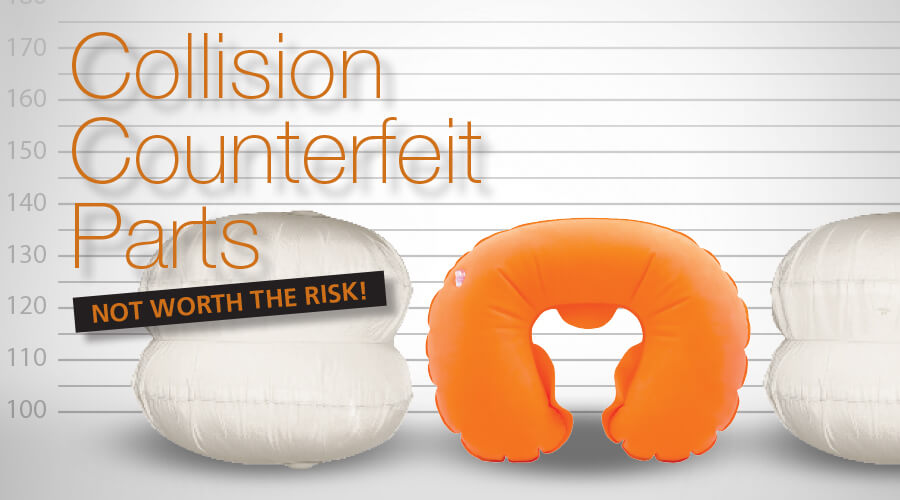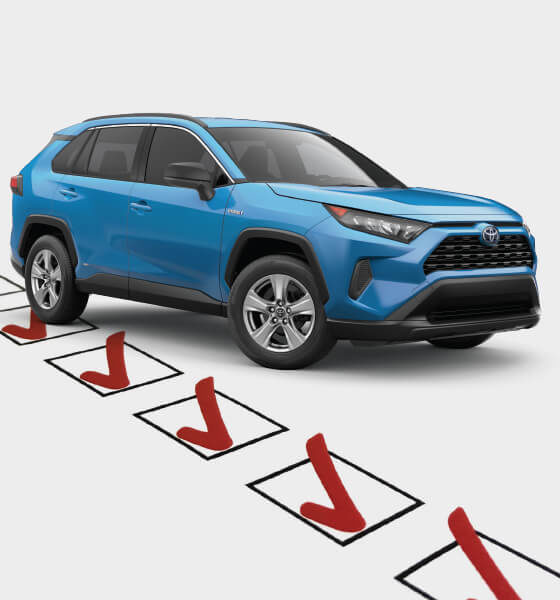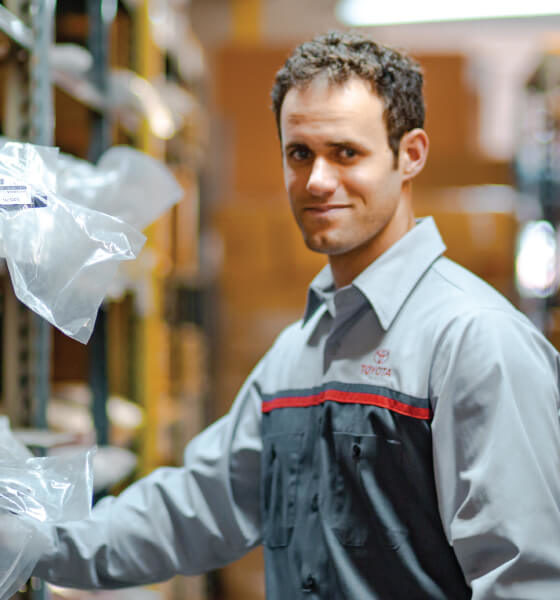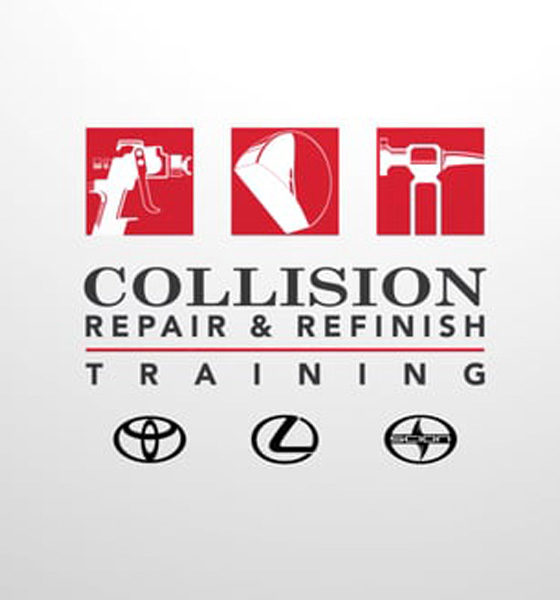
Collision and Counterfeit Parts
NOT WORTH THE RISK!
Counterfeit parts are a multi-billion dollar industry—it’s not just about lost revenue. Consider this: if a repair facility uses a non-Original Equipment Manufacturer (OEM) airbag during a repair and that vehicle gets in another accident, when the airbag fails and the driver is injured—the repair facility may be liable! Collision counterfeit parts have been in the headlines more and more lately because they have become a serious issue—one that directly impacts collision repair facilities. We talked with Teena Bohi, Brand Protection Analyst, Toyota Motor North America, to find out more about this subject.
“Toyota’s Brand Protection Program was established in 2014 because this is a very real problem. Toyota, along with many other manufacturers, are working together to address this issue to help protect our owners,” says Bohi. Counterfeit, or fake parts, pose multiple problems: On the outside, they may look the same, but the reality is, to keep costs low, counterfeiters typically use inferior materials when making their parts. In addition, counterfeit parts often don’t fit correctly from the start, requiring additional time to install. And, they don’t deliver Genuine Toyota quality so, in the long run, body parts may rust or break down sooner. Plus, with counterfeit parts, like suspension members, steering components, etc., you have no way of knowing if they will perform in a collision like Genuine Toyota Parts, putting customer safety at risk and your shop in a vulnerable position.
Think about this: When a Toyota has been in an accident and brought to your facility for repair, the owner is expecting his or her Toyota to come back as good as new, and that means using Genuine Toyota Parts for the repair.
WHAT ARE COUNTERFEIT PARTS?
Counterfeit parts are parts bearing fake Toyota trademarks that may be substantially indistinguishable from Genuine Toyota Parts. They are not regulated, are not quality tested and do not meet Toyota specifications. Further, they’re illegal. “To make matters worse, the industry has seen the entities that are importing gray market parts mix true counterfeit parts in their shipments because counterfeit parts ‘blend in’ with the gray market parts,” Bohi adds. “We get calls from Customs to come to the port to authenticate if these are authorized parts because they look legitimate.”
Toyota along with other manufacturers has formed the Automotive Anti-Counterfeiting CouncilSM (www.a2c2.com) to work to stop the influx of counterfeit parts. This group works hand-in-hand with Immigration and Customs Enforcement (ICE), Homeland Security Investigations (HSI), the National Intellectual Property Rights Coordination Center, the Federal Bureau of Investigation (FBI), the U.S. Patent and Trademark Office, the U.S. Post Office and many other agencies.
COUNTERFEIT: NOT A GOOD “FIT” FOR YOUR CUSTOMERS
A lot of collision repair facilities use non-Genuine Toyota Parts to remain competitive with the shop down the street. But what a shop saves up front can hurt it in the long run. Using counterfeit parts can damage your reputation—customers can go on social media to complain about the quality of the parts—and it increases your liability if that vehicle is in another accident and the counterfeit part fails.
This is not a new problem—counterfeiters have been around for more than 30 years. But it’s becoming more of an issue with the recent influx of inferior parts from third world countries. This is motivated by greed as those manufacturers have no concerns when it comes to counterfeit parts infringing on U.S. patents and “stealing” legitimate intellectual property rights owned by Toyota.
That raises the question: What can you do? It’s a two-part answer: The first is prevention. The second is detection.
THE POWER OF PREVENTION
Prevention starts with awareness of what parts are being forged. As Bohi says, “We have seen virtually every component of a vehicle counterfeited which can compromise the safety of Toyota owners. A counterfeit airbag, for example, is not going to perform as it should. Counterfeit parts put everyone on the road at risk.”
The issue of counterfeit airbags is so serious that the National Highway Traffic Safety Administration conducted a series of tests and shared their results that show counterfeit airbags failing to perform and, in some cases, exploding. With a counterfeit part, you have no way of knowing how much time went into the engineering, assembly, or the materials used to make the part—and, because it’s counterfeit, there are no quality control standards to which the manufacturer has to adhere.
Therefore, the easiest way to prevent this problem is to buy Genuine Toyota Parts from a Toyota dealer. That way, you know that part was built to original equipment specifications.
DETECTION: HOW DO YOU TELL A FAKE FROM AN ORIGINAL
Spotting a counterfeit part is not always easy because the good ones look a lot like the OE parts—that’s on purpose! If they look real, they’re easier to sell. Here are some suggestions on how to tell a counterfeit part from a genuine part:
- Consider the source. Did the part come from a dealer or or a third-party vendor?
- If you’re the shop manger and you’re not installing the part, ask to see the part and package. Counterfeiters copy the box and packaging as well as the part.
- If the packaging appears flimsy or the graphics don’t quite match the other Genuine Toyota Parts you have in inventory, it could be counterfeit.
- If the packaging appears to be Genuine Toyota but is in a foreign language, it could be a gray market part.
- If the price is “too good to be true”, you should be suspicious
Toyota even has people walking the floor at the annual SEMA (Specialty Equipment Market Association) and AAPEX (Automotive Aftermarket Products Expo) shows in Las Vegas to be on the lookout for counterfeit parts to try to stop the problem at the source.
THE CONSEQUENCES OF COUNTERFEIT PARTS
No one wins when using counterfeit parts. They may be more affordable in the short term, but in the long run, they have a negative impact on your entire business:
- Parts That Don’t Fit: Counterfeit parts don’t deliver the fit and quality of Genuine Toyota Parts. That means they will take longer to install because they don’t fit correctly the first time. Time is money, and that makes counterfeit parts costlier.
- Negative Effect on Durability: People buy Toyota vehicles because of their quality and durability. Anything that compromises that can cause repercussions for your facility and for Toyota. That’s why it’s imperative to always rely on Genuine Toyota Parts.
- Safety Compromised: With counterfeit parts, there are no checks and balances–no assurance that counterfeit parts perform in a collision the way OE parts perform—and the repair facility that uses counterfeit parts is liable if that vehicle is in an accident and the part fails.
- Economic Impact: The U.S. Federal Trade Commission (FTC) estimates that counterfeit automobile parts cost the United States’ automotive parts industry $3 billion in lost sales, as well as thousands of lost jobs due to the parts being made offshore.
Counterfeit parts can also affect the vehicle’s appearance and decrease its resale value, both of which negatively impact customer satisfaction.
REMEMBER: GENUINE MEANS GENUINE
Bohi concludes, “No one intends to use counterfeit parts. They’re sold deceptively and shops may unwittingly use parts that could fail when the driver needs them the most. Counterfeit parts jeopardize how a vehicle reacts in an accident, so don’t be fooled. You get what you pay for.”
So, when repairing a Toyota, rely on Genuine Toyota Parts, and the only source for those parts is from a Toyota dealer. That way, you and your customers know they are always getting the authenticity and quality of Toyota—and that’s priceless!



